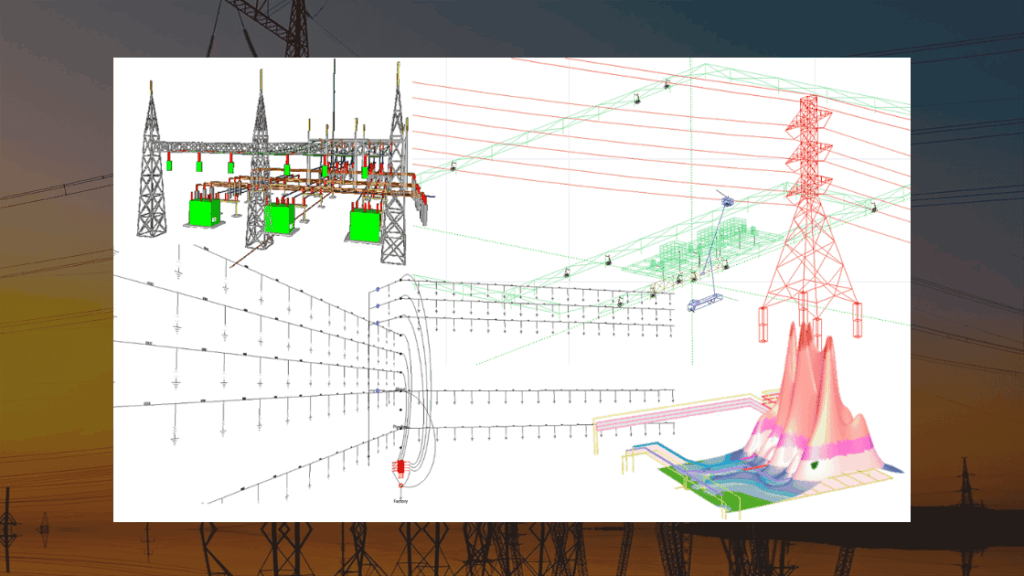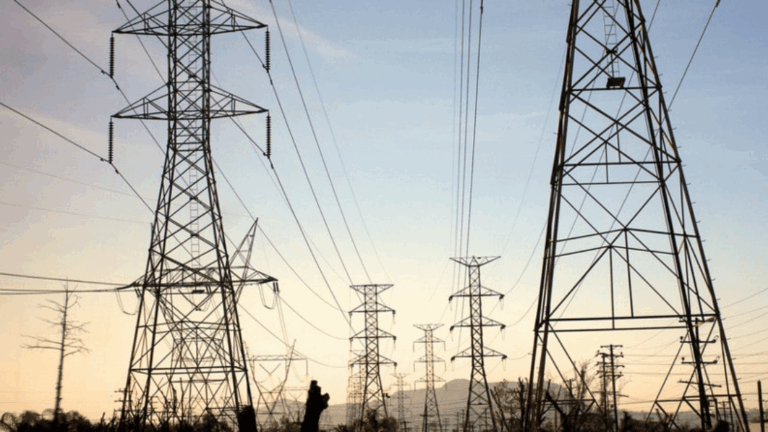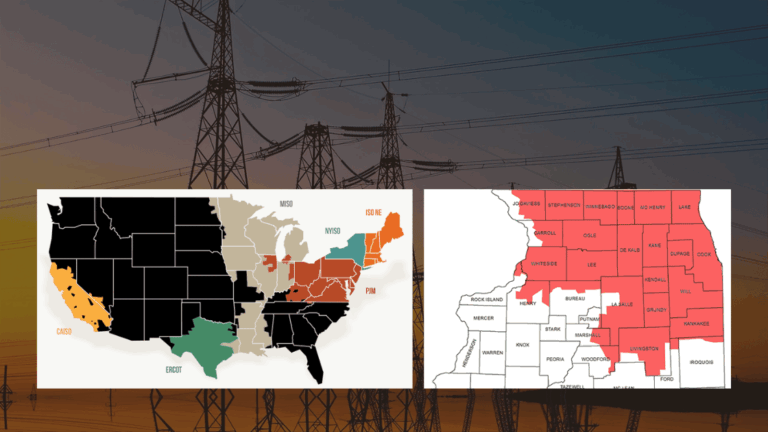At Keentel Engineering, we specialize in advanced grounding system design, electromagnetic interference (EMI) mitigation, and transient response analysis powered by SES CDEGS software—the world’s leading simulation suite for high-voltage (HV) and extra-high-voltage (EHV) systems.
Since 1974, SES CDEGS (Current Distribution, Electromagnetic Fields, Grounding, and Soil Structure Analysis) has set the global standard for modeling complex electrical phenomena. Keentel’s engineers apply this sophisticated toolset to deliver safe, cost-effective, and NERC-compliant designs across utility substations, renewable energy facilities, and industrial infrastructures.
Why Choose Keentel for CDEGS-Based Engineering Services?
🔹Full Suite Simulation: From soil resistivity testing to lightning shielding and EMI analysis.
🔹Regulatory Compliance: Designs meet IEEE Std 80, NESC, and NERC PRC standards.
🔹Design Optimization: Reduce materials and construction costs while maximizing personnel safety.
🔹Transient and Frequency Domain Studies: Evaluate system resilience under faults, switching surges, and lightning events.
Our CDEGS-Powered Engineering Services
| Services | Key modules / outputs |
|---|---|
| Grounding / Earthing Design | AutoGround, MultiGround+ → step/touch maps, mesh & rod sizing |
| EMF / EMI & AC-Interference | MultiFields, SPLITS → pipeline & telecom induced-voltage studies |
| Lightning & Surge Protection | HIFREQ, SESShield → mast layout, surge-arrestor kA ratings |
| Cable & Line Parameter Modelling | MultiLines, TRALIN → sequence impedances for PSCAD/ETAP models |
| Environmental Noise & Corona | SESEnviro → EMF & audible-noise compliance reports |
➡️ Explore our Substation Design Services
SES CDEGS – Technical FAQs
Q1. What is SES CDEGS?
SES CDEGS is an integrated software suite for Current Distribution, Electromagnetic Fields, Grounding, and Soil analysis. Engineers use it to model grounding systems, EMI/EMF effects, and lightning or switching transients in high-voltage networks.
Q2. Which CDEGS modules are used for grounding-grid design?
AutoGround, MultiGround, and AutoGroundDesign generate conductor layouts, step- and touch-voltage maps, and conductor sizing that meet IEEE Std 80 limits.
Q3. What grounding standards do your designs follow?
Keentel designs comply with IEEE Std 80 and 81, the NESC grounding rules, and any additional local-utility requirements.
Q4. How do you determine soil resistivity?
We run field tests—Wenner, Schlumberger, or Dipole-Dipole—and process the data in RESAP to build multilayer soil models.
Q5. Can CDEGS handle multilayer soil?
Yes. The software supports up to 20 soil layers with different resistivities and thicknesses for precise fault-current dispersion.
Q6. What is step- and touch-voltage analysis?
It calculates the voltages a person could experience on the ground or between hand and foot during a fault, ensuring they stay below safety thresholds.
Q7. How are fault currents distributed in a grounding system?
Modules like MALT and SPLITS simulate how fault currents split among parallel conductors and flow into the earth.
Q8. What interference types can you model?
We analyse inductive, capacitive, and conductive interference on pipelines, telecom cables, rail signalling, and other nearby metallic structures.
Q9. Can Keentel evaluate lightning risk?
Yes. Using MultiFields and SESShield, we model strike probability, surge currents, and optimise mast placement and bonding grids.
Q10. How do you calculate cable and line parameters?
MultiLines and TRALIN compute sequence impedance, admittance, and electromagnetic coupling for both overhead lines and buried cables.
Q11. Do you analyse EMF and radio noise?
Absolutely. SESEnviro and MultiFields predict magnetic-field strength, corona discharge, and radio-interference voltage (RIV).
Q12. Can you design cathodic-protection systems?
Yes. We model anode beds and stray-current paths to protect pipelines and underground assets from corrosion.
Q13. Is 3-D grounding visualisation available?
Our team uses SESCAD and SESSystemViewer to create detailed 3-D renderings of earth grids, conductors, and above-ground structures.
Q14. Do you perform transient-surge studies?
Yes. HIFREQ and FFTSES analyse lightning and switching surges in both frequency and time domains.
Q15. Can you model fault conditions for NERC compliance?
Yes. Our studies support NERC PRC-005, PRC-023, and PRC-024 requirements for protection settings and ride-through capability.
Q16. Can buried and overhead conductors be modelled together?
CDEGS can model coated, bare, pipe-enclosed, and overhead conductors in one integrated simulation.
Q17. Do you offer solutions for unusual EMI problems?
We provide tailored mitigation—gradient wires, decouplers, bonding upgrades—for pipelines, fibre lines, CATV, and rail systems.
Q18. Do you conduct environmental-impact studies?
Yes. We evaluate corona loss, audible noise, EMF exposure, and prepare documentation for permitting.
Q19. What documentation do clients receive?
You get PE-sealed reports, SES “how-to” guides, model files, and direct engineering support for follow-up questions.
Q20. How accurate are CDEGS simulations?
All modules are validated through laboratory tests, field measurements, and peer-reviewed research; utilities worldwide rely on their accuracy.
➡️ Explore SES CDEGS software for CDEGS Suite
Case Studies: How Keentel Engineering Powers Reliable Solutions
Grounding System Design for 345kV Substation Expansion
Location: Midwest Utility (Confidential)
Scope: Expansion of an existing 345kV substation, including new transformer bays and reactors.
Challenge: Designing a grounding system in multilayer soil while meeting IEEE Std 80 safety limits for updated fault current levels.
Solution: Keentel Engineering utilized RESAP and MultiGround+ modules from the CDEGS suite to accurately model soil profiles, fault current distribution, and step/touch voltages. Hotspot areas were identified and mitigated through optimized conductor placement.
Outcome: Delivered a grounding system that fully complied with IEEE/NESC standards while achieving 20% material cost savings through strategic conductor optimization.
AC Interference Study for Shared Right-of-Way
Location: Texas Renewable Corridor
Scope: Assessing AC interference on a gas pipeline co-located with wind farm collector lines.
Challenge: Preventing hazardous induced voltages and currents on the nearby gas pipeline to meet stringent pipeline safety requirements.
Solution: Using MultiFields+ and TRALIN, Keentel simulated the electromagnetic coupling effects between the transmission lines and the pipeline, designing mitigation measures such as gradient wires and strategic grounding points.
Outcome: Successfully reduced induced voltage peaks by over 60%, safeguarding the pipeline and eliminating the need for costly redesigns.
Lightning Protection Optimization for Solar Plant
Location: Arizona, USA
Scope: Lightning protection design for a 50 MW utility-scale solar farm prone to frequent lightning strikes.
Challenge: High soil resistivity combined with repeated outages and equipment failures during thunderstorms.
Solution: Leveraging MultiFields and SESShield, Keentel conducted a comprehensive transient analysis, optimizing the layout and height of lightning masts and reinforcing bonding grids.
Outcome: Since the upgrade, the solar facility has reported zero lightning-related outages across two full storm seasons, improving reliability and protecting assets.
Offshore Cable System Modeling for Wind Substation
Location: Offshore Project (Confidential Client)
Scope: High-voltage subsea cable modeling to support offshore wind farm fault studies and load flow simulations.
Challenge: Precisely modeling complex multi-core subsea cable arrays laid across layered seabed profiles to meet coordination requirements for fault studies.
Solution: Keentel employed MultiLines+ and SPLITS to simulate mutual inductance, capacitance, and electromagnetic interactions among cables, feeding critical parameters into PSCAD dynamic models.
Outcome: Delivered high-accuracy cable models for vendor coordination, ensuring compliance with project fault analysis requirements and optimizing system protection.
Partner with Keentel Engineering for High-Precision Grounding and EMI Solutions
When it comes to critical grounding and transient simulations, CDEGS software is only as effective as the experts behind it. At Keentel, we combine cutting-edge tools with three decades of HV/EHV engineering excellence to deliver safe, optimized, and fully compliant designs.
Call 813-389-7871 | Website keentelengineering.com | Contact Book your free grounding assessment today






